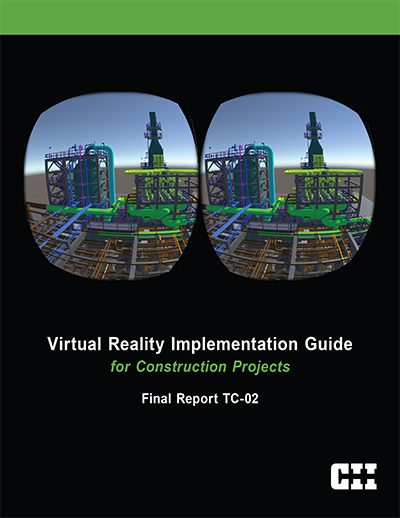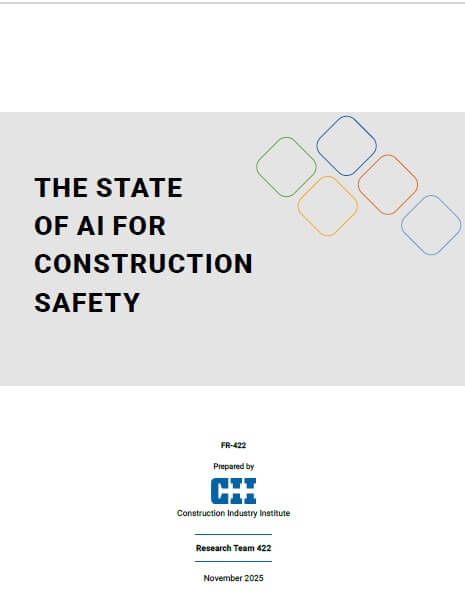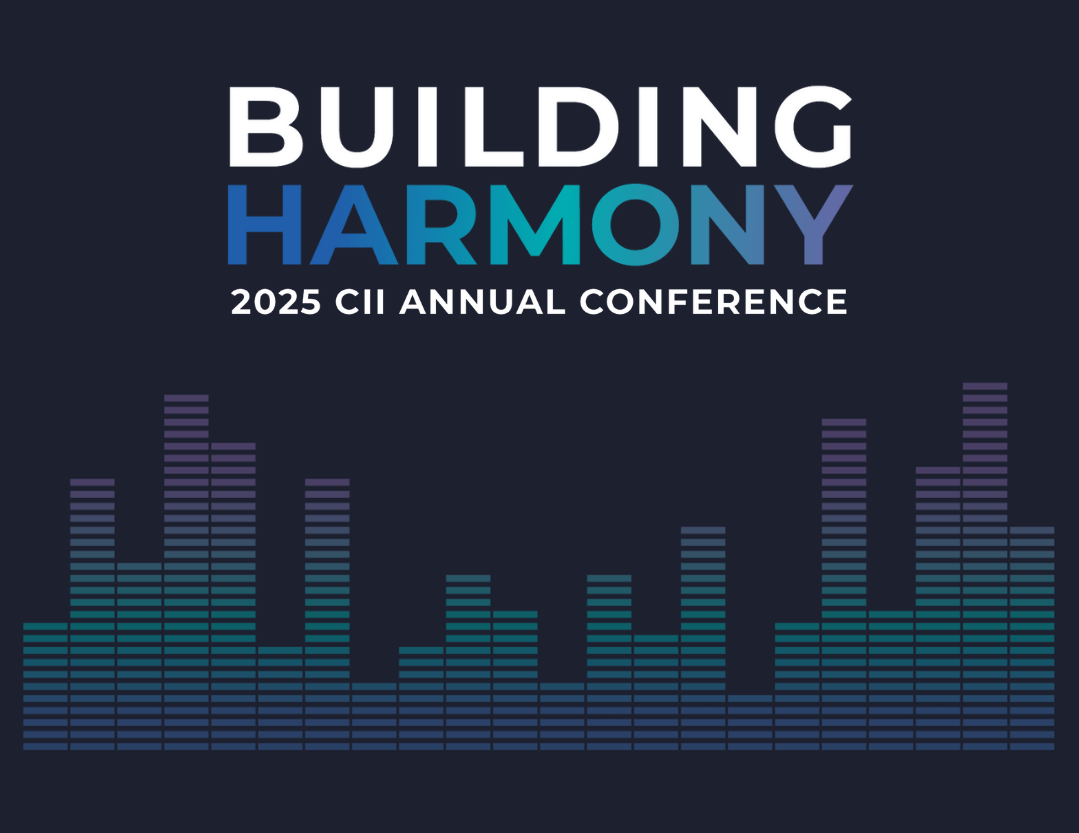
Virtual Reality Implementation Guide for Construction Projects
The visualization of construction models and environments has already benefited the construction industry in numerous scenarios and tasks. Now, immersive virtual reality (IVR) presents a more immersive and intuitive visualization approach for industry professionals. However, using IVR still requires quantitative performance measurements and practical instruction. The CII Technology Committee challenged Research Team TC-02 (RT-TC-02), Virtual Reality in Construction, to examine the gap between the state-of-the-art and the state-of-the-practice for IVR applications, give the industry experimental results on user performance, and publish a viable implementation guideline for using IVR.
To this end, the team conducted user tests on design review and planning tasks, observing both novice and expert participants. The participants were randomly assigned to a treatment group (which used the IVR system) or a control group (which worked in the traditional desktop setting), and then asked to review the 3D model of a gasoline refinery facility.
The researchers measured and analyzed several indicators of user performance:
- Detecting design errors
- Judging the scope of work
- Assigning an installation sequence for each installation work package
- Remembering the scope of work
The test results demonstrated that IVR enhanced the users' ability to perform the review tasks. Participants in the IVR (treatment) group scored 21.86% to 142.92% higher than the desktop (control) group. There was a statistically significant link between which device was used and what score was achieved on both tasks, while the industry experience of a participant only showed improved performance in the error detection task. Also, the IVR group samples showed larger standard deviations regardless of experience and task, indicating that further improvements can be expected when participants become more experienced with the equipment.
After providing this robust evidence of IVR’s effectiveness (including showing that the benefits of IVR implementation greatly outweigh its costs), RT-TC-02 compiled a viable guide to summarize experiences with implementing IVR, both from this research and based on industry projects. That guide (this report) introduces the key steps of IVR execution at both the company and project levels, including implementation strategies, hardware and software set-up, training for developers, model preparation procedures, and a cost-benefit analysis. This report not only represents the state-of-the-practice IVR applications, but also contains a vision and identification of opportunities for the ongoing development of IVR. In order to support various levels of implementation, this report documents the logic and major concerns for each decision-making point in considerable detail. As a comprehensive implementation guide, it gives construction companies step-by-step instructions to follow to develop leadership in the majority of visualization-dependent tasks.
RT-TC-02 tested 18 users (a combination of industry experts and novices), comparing their performance on two inspection tasks to see whether they performed better in a desktop environment or by using immersive virtual reality (IVR) (FR-TC-02, p. 28):
- The group that used IVR scored higher (21.86% to 142.92%).
- There was a statistical significance in both tasks between the scores a user posted and the equipment he or she used (p = 0.012, 0.002).
- The data also showed statistical significance in comparing the error-detection scores of novices vs. industry experts (p = 0.038).
RT-TC-02 summarized suitable IVR implementation scenarios according to existing research projects and industry tryouts. Currently, IVR capabilities are validated mostly in the following fields of application (FR-TC-02, p. 35):
- Design review or optimization
- Facilitating collaboration
- Training programs
RT-TC-02 explored efficient approaches to transform the 3D model of a construction project into a VR-ready model for different applications. The team investigated and documented four major steps and corresponding operations (FR-TC-02, p. 15):
- Selecting target components
- Optimizing 3D content
- Modifying the system to incorporate a game engine
- Developing the user-computer interface and functions
{^widget|(widget_displayname)WatermarkImage|(name)WatermarkImage|(image)%7e%2fCII%2fmedia%2fPublications%2fTC-02_Figure3.jpg%3fext%3d.jpg|(width)|(height)^}
RT-TC-02 identified the major cost and benefit items based on industry experiences and trends of development (FR-TC-02, p. 48). The benefits of IVR applications clearly outweighed their costs. The analysis delivered two chief findings:
- The cumulative IVR investment will increase slowly after two years of implementation.
- The majority of the IVR investment will be devoted to the developers’ salaries.



